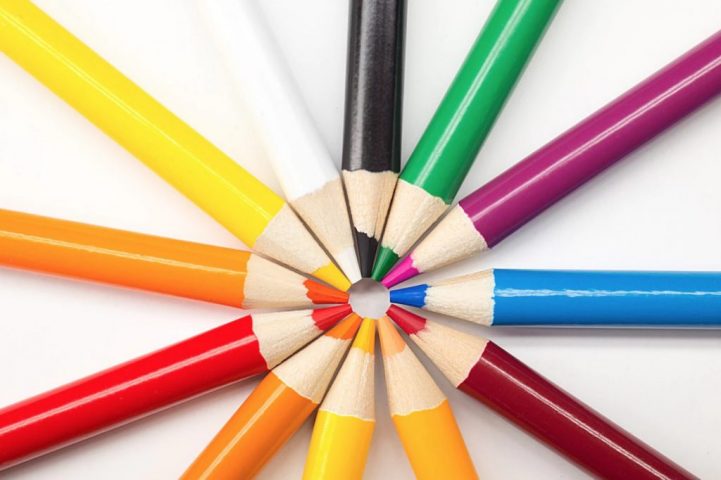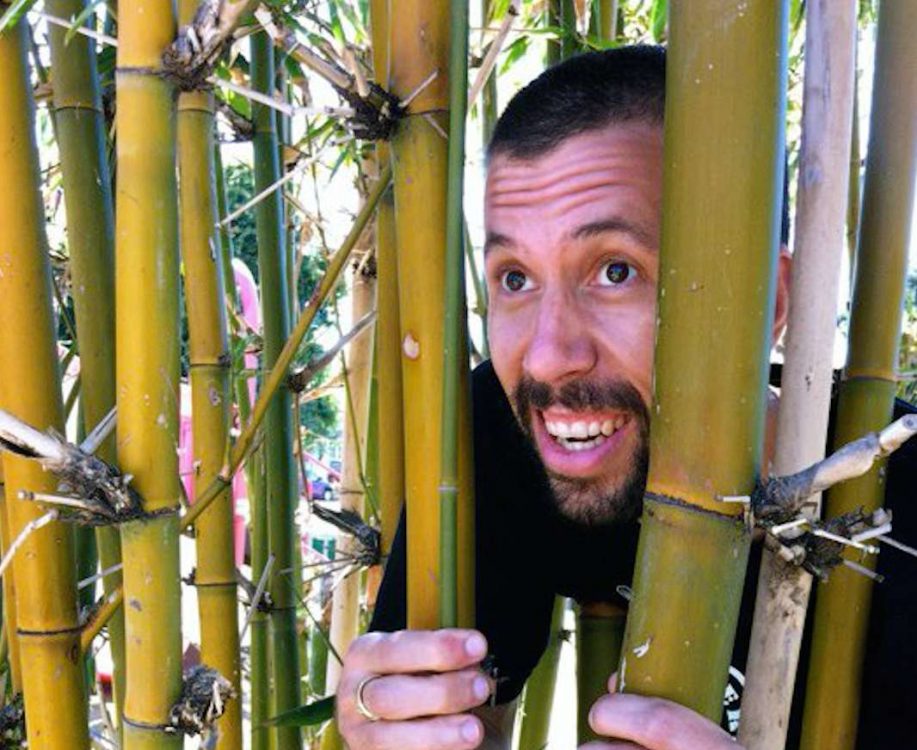
US Tax Tips for Digital Nomads
April 3, 2019
A Directory of Worldschool hubs for nomad families and life-long learners
April 9, 2019My wife and I have never had an easy time conforming to mainstream society. As an international couple we’ve moved back and forth between Europe and California about a half dozen times. Our kids don’t know whether they’re American, German, English, Spanish or Catalonian. As artists and entrepreneurs, neither of us has ever held down a 9-5 job with an actual salary and benefits. But somehow we get by.
As our kids reached schooling age, we were forced to look at ourselves and think about the kind of education we wanted for them. The easy option would have been to drop them off at the nearest elementary and let the machinery of our public institutions pump them down the treadmill. But we’ve never been the kind of people to settle for an easy option, or for anything resembling a treadmill. And we always felt like our conventional schooling had done desperately little to prepare us for our own unconventional lives and careers. So instead, we immersed ourselves in the study of alternative education and drove ourselves down a rabbit hole of pedagogical investigations.
For three years, our daughter attended a Montessori preschool and kindergarten. Walking distance from our suburban California home, this was effectively the non-conformist’s option of least resistance. But upon graduation, at the age of six, we decided it was time to turn our eccentricity up a notch. We pulled her out of school, took our 3-year-old son off the waiting list, sold everything we owned—including a home and a business—and went to live like Euro-nomads with a VW camper bus.
(For more about that, check out this story: A year without a principal.)
Over the course of our travels we read about and met with a number of families engaged in various forms of homeschooling, unschooling, free schooling and world schooling. It seemed like if you had enough imagination to come up with a good name for it, you could raise your kids with it. But much more than arbitrary distinctions, these assorted pedagogies can all be associated with different life styles, personal philosophies and larger world views.
So in order to help to grasp the big picture and wrap our minds around the rainbow of options, I’ve put together this list of 11 innovative school systems, in roughly chronological order.
DISCLOSURE: Some of the links in this article are affiliate links. This means that, at no additional cost to you, we will earn a small commission if you click through those links and make a purchase. This helps us meet the costs of producing and maintaining our site.
The Not-So-Alternative education
As much as we like to disparage it as a calcified relic of a bygone era, it’s important to recognize that the notion of universal public education was once a marvelous innovation, a triumph of the Victorian crusade for a healthier and more prosperous society.
In 1884, the International Conference on Education in London marked a turning point as European countries came together and embraced the idea of primary education for all. Methodologies were discussed, curricula were proposed, and a new institution was born. Over the next few decades, politicians and headmasters collaborated to establish educational standards, and by the time of World War One, most European countries had introduced public secondary schooling as well.
A bi-product of the industrial revolution, schools were set up like orderly factories, with neat rows of desks all lined up and facing one direction, towards the disciplinarian instructor at the head of the classroom. Together the class would work through the material, with every student focussing on the same page at the same time. And gradually they would complete the mandated curriculum in near perfect unison.
In the spirit of mass production and the sense of maximum efficiency, the system was a huge success. As far as nurturing individual growth and development, it left something to be desired.
Learn more: Check out The Underground History of American Education, by John Taylor Gatto, available at Amazon.
Old School alternatives
1. Homeschooling
Before the dawn of universal public education, most children were brought up with what we now call homeschooling. Those who could afford it received a fine education from their tutors and governesses. But most kids simply did what’s now called free learning (see below) or homeschooling.
Nowadays families may choose to homeschool for any number of reasons. Perhaps they disapprove of the public school board’s emphasis on the scientific paradigm and prefer a curriculum more rooted in scripture. Others may object to the policy of mandatory vaccinations or the daily ritual of saluting the flag. Or they have simply come to realize that the conventional system of education is not meeting their needs and expectations.
Rules on homeschooling and compulsory education vary from state to state, and between countries. Likewise, the styles of homeschooling can differ dramatically between families. Some households prefer to follow a more structured curriculum, and others keep it informal and leave plenty of room to improvise.
2. Montessori Method
In the first decade of the 20th century, Maria Montessori conducted extensive studies on childhood development and scientific pedagogy to develop what remains the most popular style of “alternative” education around the world.
The Montessori method puts a higher priority on the individual needs and interests of the child, emphasizing the importance of allowing the student to discover for herself rather than simply learn by direct instruction. Mixed age classrooms and carefully prepared environments are key features in Montessori education. Some schools, like my daughter’s kindergarten, follow the elaborate methodology with strict rigor, while others pick and choose certain elements and simply identify themselves as “Montessori inspired”.
Learn more: Check out How To Raise An Amazing Child the Montessori Way, available from Amazon. Also look for Montessori’s own books, The Discovery of the Child & The Absorbent Mind.
3. Waldorf or Steiner Education
Based on Rudolf Steiner’s philosophy of anthroposophy, Waldorf education focuses on fostering creativity and imagination. The first Waldorf school opened in Germany in 1919, and by some measures the movement has become even more popular than Montessori.
But unlike Montessori, Waldorf education does not employ a strict methodology. Rather, anthroposophy places greatest emphasis on individual freedom and holistic character development. Recognizing the integral nature of intellectual, emotional and spiritual growth is central to the approach, and different schools and instructors have used a variety of strategies and techniques to encourage that growth. Generous time is devoted to outdoor exploration and the arts.
Learn more: Check out The Education of the Child, by Rudolf Steiner, available from Amazon.
4. Reggio Emilia
Another product of Italy, which appeared shortly after WWII, the Reggio Emilia approach takes its name from the northern Italian province where it was developed by pedagogist Loris Malaguzzi. Somewhat like the democratic models described below, this educational philosophy focuses on self-directed and experiential learning. In practice, the Reggio Emilia method involves lots of artistic expression, hands-on learning and outdoor exploration.
Learn more: Check out The hundred languages of children, available from Amazon.
Contemporary models and pedagogies
5. Summerhill School, UK
Founded in 1921, the Summerhill School in Suffolk, England, is widely considered the paragon of democratic eduction. The chief principles of this model are self-determination and the notion that students and teachers have an equal voice in the running of the school. Students then have a great deal of input on matters like class schedules and curricula, even on the hiring and firing of instructors.
Summerhill’s founder, Alexander Neill, repeated the maxim, “Freedom, not Licence”, underscoring the importance of allowing students to do as they please, while also ensuring that no one else gets harmed in the process. Neill criticized and distanced himself from many schools that claimed to follow Summerhill’s example but seemed not to distinguish between freedom and licence.
6. Sudbury Valley, MASS
Similar in philosophy to Summerhill, the Sudbury Valley School, established in Massachusetts in 1968, represents the prime example of democratic education in the United States. Today more than 50 schools across the US and around the world identify as Sudbury schools.
The Sudbury School has three primary principles, which are educational freedom, democratic governance, and personal responsibility. There are no traditional classrooms in the school and no required academic curriculum. The role of staff can be understood as getting out of the way and letting students learn for themselves. Students, ages 4-19, are free to do as they please and study what they wish, with or without the guidance of staff members and fellow students. Staff and students vote each year to decide which staff members will be hired or rehired for the following year.
7. Green School of Bali, Indonesia
Conceived in 2006 and opened in 2008, the Green School has already drawn worldwide attention for its innovative methods and curriculum. Rather than a specific pedagogy, the Green School emphasizes environmental awareness and stewardship as its core, unifying philosophy. The campus is notable for its stunning architecture that is both beautiful and sustainable, with significant quantities of bamboo, as well as renewable energy and permaculture landscaping.
The school’s primary goal is to train future leaders in global citizenship. The curriculum places a strong emphasis on environmental science, entrepreneurship, arts and ethics. Equally important to academics, students come to value the virtues of responsibility, integrity, sustainability, equality and community.
The majority of Green School students come from abroad, many from Australia, and a portion of their tuition goes towards sponsoring local Balinese students who make up roughly 20 percent of the school population.
Check out GreenSchoolBali.com for complete details.
8. Forest Schools
Another educational model that has a lot of overlap with Reggio Emilia and democratic schools, Forest School can be described as an inspirational process that engages students to learn, develop and achieve by spending time in nature, especially woodlands and forests.
Like some of the other systems we’ve looked at, this method emphasizes self-directed and experiential learning. Students have space and autonomy to learn and explore on their own. These experiences promote confidence and self-esteem, and foster positive relationships with both people and the natural environment.
9. Free Learning
When I first heard about “unschooling”, I was decidedly skeptical. Perhaps it was just a poor choice of words. In Europe I generally hear it referred to as Free Schooling or Free Learning, which sounds rather more respectable.
Essentially this is the homeschooling version democratic education, so it sort of defies definition. Children stay home and do as they please, and that can play out in a variety of ways. As children assume a greater degree of self-determination and personal responsibility, the parents must take on new levels of trust. Asking a parent to get out of the way and let the child discover things for himself can be a challenge to the parental instincts. Consequently, this becomes a profound learning process and experience for parents and children alike.
What you initially understand to be a hands-off education actually ends up demanding a major commitment of time, energy and love. Like other homeschooling models, not every household is equipped for a Free Learning education. Two parents who work full-time, for example, will have a difficult time with this one.
What children really need—for this to work—is a village, a community of other children and adults with a broad spectrum of interests and abilities, the opportunities to observe and take interest. We actually had the pleasure of spending a month with a family in Austria who have embraced this lifestyle with their four children, and with dazzling results.
Learn more: Check out How Children Learn and other books by John Holt, as well as Free to Learn and other titles from Peter Gray, available at Amazon.

New models
10. Worldschoolers
Worldschooling was another new term we came across as our family embarked on the nomadic life with our young, school-aged children. Again, this is less of a methodology and more just a way of life, usually a temporary way of life. Think of it as homeschooling on the road. That could mean homeschooling with textbooks and lesson plans, or free learning, which is basically what we did for a year or so as we traveled and worked on farms and homesteads across Europe.
An incredible way of life, if you don’t mind living out of a suitcase and can find a way to make money working remotely, worldschooling turns the whole world into your virtual classroom. The emphasis then turns to discovering new countries, new cultures and new languages. With that comes history, geography, geology, and unlimited opportunities for the whole family to learn.
For me, that’s the best part of worldschooling, the way that the whole family participates. Of course, the parents can answer a great many questions, but you’ll regularly encounter situations that are new to everyone, problems that can be solved together, and lessons that will never be forgotten.
Most worldschooling communities have a presence online, because individual families tend not to stay in one place for very long. At they same time, they crave that sense of community and support they find by exchanging stories and experiences with other worldschoolers. We recently discovered a group in the south of Spain calling themselves the Worldschoolers of Andalucia.
11. Sociocratic School
Just this month, while researching various educational frameworks for the secondary school we are proposing here in the Spanish Pyrenees, we came across another model known as sociocracy. This system of governance can actually work with any type of organization and in conjunction with any pedagogical methodology.
The primary basis of sociocracy is that all voices are heard. Unlike democratic systems where the majority decides and the minority submits, sociocracy rules by consensus and consent. Every member of the group, school, business or organization has their say, and everyone has the right to object. In the case of objections, negotiations continue until they arrive at something everyone can accept, even if it’s not their first choice.
This system, also known as dynamic governance, works in many settings, but it was a school in the Netherlands where it gained attention and popularity in the mid 20th century. The more I learn and think about sociocracy and observe the shortcomings of majority-rule democracy, the more I see sociocracy as the most hopeful model for a healthy community.
As we speak, there is a school in northern Germany forming under this guiding principle. The Unique Free School (http://unique-schule.de/) is currently seeking students and donors, and hopes to open by the fall of 2019.
Conclusions
If you managed to make it through this list, then you now have some appreciation for the difficult decision faced by concerned families around the world. We see the need for an education that acknowledges the personhood of our children, offers a new curriculum for the post-industrial age, and encourages the level of creativity required in this fast changing world. And while there are a multitude of options, they remain, for the most part, a scattered array of semi-fringe movements.
It’s hard to know what’s best, but I’m determined to teach my children by example. I intend to show them that there’s no need to settle for the ordinary road most commonly travelled, when there’s a world of more interesting options out there, even if they aren’t always the simplest and most convenient options.
In the meantime, unless we can build a new secondary school here in the mountains, it looks like our daughter might spend the next 2 1/2 years trying to convince us to move to Bali.
Read On: To learn more about our quest for alternative education, check out these articles.





